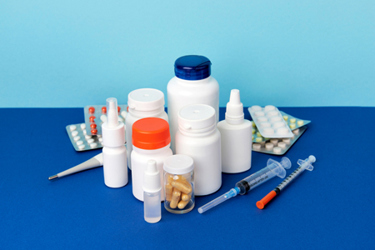Innovating Bioequivalence: A Novel Approach To Developing Complex Generic Dosage Forms
By Harshil Shah and Ravi Patel, Cosette Pharmaceuticals Inc.

The development of complex generic dosage forms presents unique challenges in ensuring bioequivalence with their reference counterparts. As pharmaceutical science advances, a novel approach to assessing bioequivalence is emerging, aimed at addressing the intricacies of these formulations. In this article, I explore this novel bioequivalence approach and how it ensures not only regulatory compliance but also enhanced therapeutic outcomes for patients.
The Challenge Of Complex Generics
Complex generic dosage forms encompass a wide range of products, from extended-release formulations to topical creams and inhalation systems. Unlike conventional generics, which often mimic simple oral tablets, complex generics involve intricate drug release mechanisms, specialized delivery systems, and multifaceted compositions. Achieving bioequivalence in these cases becomes a more intricate task due to the interplay of various factors. Here are some of the key challenges faced in the process:
- Bioequivalence assessment: Complex formulations always exhibit intricate drug release profiles, making it challenging to establish bioequivalence using traditional metrics like Cmax and AUC. Developing alternative methods and metrics to accurately assess bioequivalence for these complex products is a significant challenge. Designing and conducting bioequivalence studies for complex generics can be challenging due to the need for sensitive analytical methods, appropriate study designs, and robust statistical analyses.
- Formulation development: Understanding the interactions between the drug, excipients, and delivery mechanism in complex formulations requires a deep mechanistic understanding. Gaining insights into these interactions to replicate the therapeutic effect of the innovator product is complex and time consuming.
- Quality control and manufacturing: Ensuring consistency in the manufacturing of complex generic formulations can be demanding. Variability factors like particle size distribution, excipient properties, and manufacturing processes can significantly affect the performance of the product.
- Analytical techniques: The analysis of complex formulations requires sophisticated analytical techniques that can accurately measure drug release, dissolution profiles and other critical quality attributes. Developing and implementing these techniques can be resource intensive.
- Regulatory approval: Regulatory approval for complex generics involves a process by regulatory agencies to ensure that these products meet the required standards for safety, efficacy, and quality. Regulatory approval for complex generics requires a systematic and science-based approach, encompassing product development, characterization, bioequivalence assessment, and regulatory submission. By adhering to regulatory guidelines, employing QbD principles, and providing robust scientific data, manufacturers can navigate the regulatory approval process successfully and bring safe, effective, and high-quality complex generic products to market.
Addressing these challenges requires collaboration between pharmaceutical companies, regulatory bodies, academia, and other stakeholders. Innovative approaches that integrate mechanistic understanding, advance analytics and regulatory alignment will be pivotal in overcoming the hurdles in developing complex generic formulations.
The Novel Bioequivalence Approach
The novel approach to developing complex generic dosage forms shifts the focus from direct imitation to achieving comparable clinical outcomes. Instead of relying solely on traditional pharmacokinetic parameters, this method considers various factors, including drug release profiles, site-specific absorption, and therapeutic effectiveness. By adopting a more holistic view, this approach aims to ensure that complex generics perform equally to the reference product in real-world scenarios. Key considerations are the following.
1. In Vitro–In Vivo Correlation (IVIVC)
Establishing a strong IVIVC becomes pivotal in correlating in vitro dissolution profiles with in vivo behavior. This provides valuable insights into the release kinetics of the drug and aids in predicting its performance within the body. It helps to bridge the gap between in vitro dissolution profiles and in vivo pharmacokinetic behavior. In the context of complex generics, which often involve intricate formulations and delivery systems such as semi-solid topicals, transdermal, ophthalmic suspensions, otic suspensions, and oral suspensions, IVIVC plays a significant role in addressing several challenges.
Complex generic products often require intricate formulation designs to achieve desired drug release profiles and bioavailability. IVIVC assists in correlating in vitro dissolution data with in vivo drug absorption profiles, enabling formulation scientists to optimize formulations for improved performance and bioequivalence.
Establishing bioequivalence for complex generic products can be challenging due to differences in formulation components, manufacturing processes, and drug delivery mechanisms. IVIVC facilitates the establishment of a scientific link between in vitro dissolution and in vivo pharmacokinetic data, providing a rational basis for demonstrating bioequivalence without the need for costly and time-consuming clinical studies.
IVIVC serves as a valuable tool for regulatory submissions by providing a mechanistic understanding of drug release and absorption characteristics, thereby enhancing the credibility of bioequivalence assessments, and expediting the regulatory review process.
2. Physiologically Based Pharmacokinetic (PBPK) Modeling
PBPK models simulate drug behavior in various physiological conditions. Integrating these models into bioequivalence assessments can help predict the impact of formulation and delivery system differences on drug exposure and efficacy. Here's how PBPK modeling can help resolve some of the challenges discussed earlier in the article.
PBPK modeling enables the simulation of drug absorption, distribution, metabolism, and excretion (ADME) in the body based on physiological parameters and drug-specific characteristics. For complex generics with intricate formulations or delivery systems, PBPK modeling can predict the pharmacokinetic behavior of the drug, helping to optimize formulation design and predict bioequivalence without the need for extensive clinical studies.
PBPK modeling can facilitate the design and interpretation of bioequivalence studies for complex generics by predicting plasma concentration-time profiles following administration of the test and reference products. By comparing simulated pharmacokinetic profiles, PBPK modeling can assess the likelihood of bioequivalence and support decision-making regarding study design, sample size estimation, and acceptance criteria.
PBPK modeling allows for the evaluation of the impact of various factors, such as physiological variability, formulation characteristics, and dosing regimens, on drug exposure and bioequivalence. Sensitivity analysis within PBPK models can identify critical parameters that influence pharmacokinetic outcomes, enabling manufacturers to assess the robustness of bioequivalence assessments and identify potential sources of variability or uncertainty.
PBPK modeling can serve as a valuable tool in regulatory submissions for complex generics by providing mechanistic insights into drug absorption and systemic exposure. PBPK model predictions can complement traditional bioequivalence studies and support regulatory arguments regarding product equivalence, particularly in cases where clinical data may be limited or challenging to obtain.
3. In Vitro Analytical Techniques
In vitro analytical techniques play a crucial role in addressing the challenges associated with the development of complex generics by providing valuable insights into product quality, performance, and equivalence. Here's how these techniques help resolve those challenges.
Complex generics often involve intricate formulations with multiple components and delivery systems. In vitro analytical techniques such as spectroscopy, chromatography, microscopy, and rheology enable the characterization of formulation attributes such as drug content, particle size distribution, viscosity, and homogeneity. By providing detailed information about the composition and physical properties of the formulation, these techniques help ensure consistency and reproducibility during manufacturing and facilitate comparison with reference products.
Understanding the mechanisms governing drug release from complex formulations is essential for optimizing formulation design and ensuring bioequivalence. In vitro analytical techniques such as release kinetics modeling, permeation studies, and imaging techniques provide insights into drug release mechanisms, including diffusion, erosion, swelling, or matrix degradation. In vitro analytical techniques such as flow-through dissolution, Franz diffusion cells, paddle-over-disk, or micro dialysis enable the assessment of dissolution profiles under physiologically relevant conditions, allowing for the optimization of formulation design and prediction of in vivo performance.
In vitro analytical techniques facilitate comparative analysis between the generic and reference products by assessing critical quality attributes such as drug content, dissolution/diffusion profiles, particle size distribution, and physical characteristics. By providing quantitative data and supporting evidence of equivalence, these techniques contribute to the scientific justification of bioequivalence and regulatory approval.
4. Quality by Design (QbD)
Applying QbD principles allows for a systematic understanding of how formulation and manufacturing variables impact product performance. This knowledge-driven approach ensures consistency and quality in complex generic products. Here's how QbD helps resolve some of the challenges associated with establishing bioequivalence.
QbD encourages a systematic and science-based approach to formulation development for complex generics. By identifying critical quality attributes (CQAs) and linking them to formulation and process parameters, QbD facilitates the rational design of formulations that meet predefined quality targets.
QbD provides a comprehensive understanding of the relationships between formulation attributes, manufacturing parameters, and product quality through the use of risk assessments, design of experiments (DoE), and multivariate analysis techniques. By elucidating the impact of formulation and process variables on product quality, QbD enables manufacturers to identify critical process parameters (CPPs) and establish control strategies to ensure consistent product quality.
QbD aligns with regulatory expectations for demonstrating product quality, safety, and efficacy, making it easier to navigate the regulatory approval process for complex generics. By providing a comprehensive understanding of product quality and performance, supported by scientific data and rationale, QbD enables manufacturers to prepare robust regulatory submissions that are more likely to receive regulatory approval in a timely manner.
Conclusion
Adopting this novel approach offers several advantages. It enables a more accurate assessment of bioequivalence for complex dosage forms, fostering confidence in their therapeutic efficacy and safety. Regulatory bodies can adapt guidelines to incorporate this approach, creating a pathway for the development and approval of complex generics with greater precision.
The development of complex generic dosage forms requires a departure from the one-size-fits-all bioequivalence paradigm. By embracing a novel approach that considers the unique attributes of each formulation, pharmaceutical researchers and regulators can pave the way for a new era of complex generics that deliver consistent therapeutic outcomes. This shift holds the potential to benefit both patients and the industry by fostering innovation while upholding the standards of quality and efficacy.
About The Authors:
 Harshil Shah, B.Pharm., M.S., is associate director, bioequivalence, at Cosette Pharmaceuticals Inc.’s South Plainfield, NJ, site. He is an R&D expert with more than 12 years of scientific experience in the pharmaceutical industry. His experience includes the development of complex generic dosage forms like semi-solid, transdermal, otic, ophthalmic formulations, and 505(b)(2) products, for which he has been instrumental in the development of analytical, formulation, and bioequivalence strategies. Shah has led the development of products resulting in first-to-file, first-to-market, and CGT designations. He has led technical discussions with the FDA, spanning pre-ANDA development meetings, post-DRL/mid-cycle reviews, post-CRL meetings, and control correspondences. Previously, he has worked for pharma companies Amneal Pharmaceuticals, G&W Laboratories, and Solaris Pharma. Harshil received his M.S. in pharmaceutics, specializing in industrial pharmacy, from Long Island University, NY.
Harshil Shah, B.Pharm., M.S., is associate director, bioequivalence, at Cosette Pharmaceuticals Inc.’s South Plainfield, NJ, site. He is an R&D expert with more than 12 years of scientific experience in the pharmaceutical industry. His experience includes the development of complex generic dosage forms like semi-solid, transdermal, otic, ophthalmic formulations, and 505(b)(2) products, for which he has been instrumental in the development of analytical, formulation, and bioequivalence strategies. Shah has led the development of products resulting in first-to-file, first-to-market, and CGT designations. He has led technical discussions with the FDA, spanning pre-ANDA development meetings, post-DRL/mid-cycle reviews, post-CRL meetings, and control correspondences. Previously, he has worked for pharma companies Amneal Pharmaceuticals, G&W Laboratories, and Solaris Pharma. Harshil received his M.S. in pharmaceutics, specializing in industrial pharmacy, from Long Island University, NY.
 Ravi Patel, M.S., is assistant vice president, R&D, at Cosette Pharmaceuticals Inc. In this role, he has led more than eight products to the U.S. market. Previously, he served as the director of research and development at Solaris Pharma Corporation, and has previously worked with Amneal Pharmaceuticals. He has 15 years of experience in the field and is also a member of the American Association of Pharmaceutical Scientists. Patel earned a M.S. in pharmaceutical manufacturing from the Stevens Institute of Technology after completing a bachelor’s degree in pharmacy.
Ravi Patel, M.S., is assistant vice president, R&D, at Cosette Pharmaceuticals Inc. In this role, he has led more than eight products to the U.S. market. Previously, he served as the director of research and development at Solaris Pharma Corporation, and has previously worked with Amneal Pharmaceuticals. He has 15 years of experience in the field and is also a member of the American Association of Pharmaceutical Scientists. Patel earned a M.S. in pharmaceutical manufacturing from the Stevens Institute of Technology after completing a bachelor’s degree in pharmacy.
